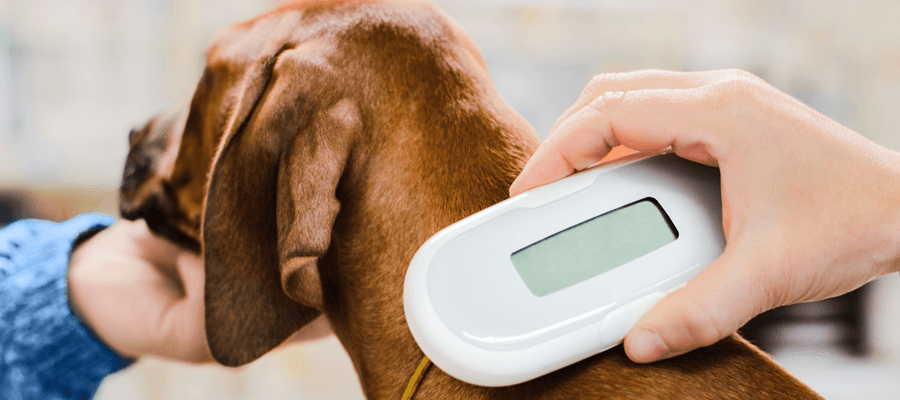May and June are both dedicated to bringing awareness to microchipping your pet and making sure that the chip registration information is up to date. Why — because it’s estimated that 10 million pets are stolen or lost every year. Your pet having a microchip is its best chance at being reunited with you.
When Microchipping Pets Began
The pet microchip was first patented in 1985 by a California-based company called AVID, and the very first microchip to be implanted was in 1989. AVID Identification Systems was started by a veterinarian, and they are still making and selling microchips and scanners to veterinary clinics and pet shelters worldwide. By 2008, about 70,000 chip readers were sold in the United States.
How Pet Microchips Work
A pet microchip is a tiny glass cylinder about the size of a grain of rice that is implanted between the shoulder blades of a dog or cat. The microchip emits a frequency when a scanner is passed over it, either 125 kilohertz (kHz), 128 kHz, or 134.2 kHz. While studies have shown that tumors have developed in mice and rats with microchips, dogs, cats, and other companion animals have not reported any tumors from the microchips.
And if you are wondering if you ever need to replace a microchip, the answer is no. Microchips are designed to last 25 years, so basically, the life of your pet.
Microchips Only Work if Your Contact Information Is Up to Date
Last year we posted a blog about three different stories where dogs were separated from their owners due to theft or just plain getting lost. These three canines were reunited with their owners because they were microchipped, and the information associated with those chips was registered and current.
A study done by the Ohio State University College of Veterinary Medicine found that 9.8% of microchipped pets had an unregistered microchip. That’s like putting a collar on your pet with no contact information.
Now is a great time to check the information on your pet’s microchip. If you have your pet’s number, you can enter it into petmicrochiplockup.org and see who the chip is registered with and what contact information is listed. If you don’t know your pet’s chip number, ask your pet’s veterinarian or their office. They should have it on file or can scan it for you.
